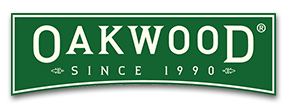
1. Shop and prep
It can be exhausting for any parent to spend endless amounts of time cutting sandwiches and stacking lunchboxes every week. A simple way to save time is to make preparations on Sunday night – purchase food in bulk and pre-make meals and snacks for the week ahead. If you are not sure where to start, begin by planning with your family and ask them what they would like to see in a healthy lunchbox. If they are able to pitch in and help you for the week ahead, that’s even better.
2. Plan
A simple way to plan the week is to write a list on the back of the fridge. Categorise your food into snacks, sandwiches, and fruit and make a checklist so that you have the refrigerator well stocked. Tie this in with your weekly shop or online food delivery.
3. Store
Currently up to 1/3 of food is wasted in Australian kitchens, and much of this can be attributed to food not being properly organized and stored in the fridge. Make sure you keep fresh produce in air-tight containers and label them clearly. This will help food stay fresher and last longer, and will shorten your food preparation time during the week.
4. Freeze
Many foods can be well preserved with freezing – all types of bread rolls and grain substitutes stay fresh when frozen, as do fresh fruits such as berries and sliced mango. When you plan your meals on a Sunday night, set aside some ingredients for the freezer that can be defrosted for later in the week.
5. Label
Dry erase markers are a great way to monitor fresh produce and also keep tabs on individual lunchboxes. You can also use masking tape and pencil, or even invest in a professional label maker. It’s a good idea to label fresh produce with a date that it was purchased. This will make it easy to know when to throw it out.
6. Stock up
If you are making a fresh lunch every morning, it’s worth having the right equipment on hand. Stainless steel lunchboxes usually last longer and store food better than plastic options. You can also buy funky-looking cotton sandwich bags that can be washed and re-used for multiple lunch runs. Try to avoid plastic wherever possible and make sure lunch equipment is well labelled with your child’s name and contact details.
